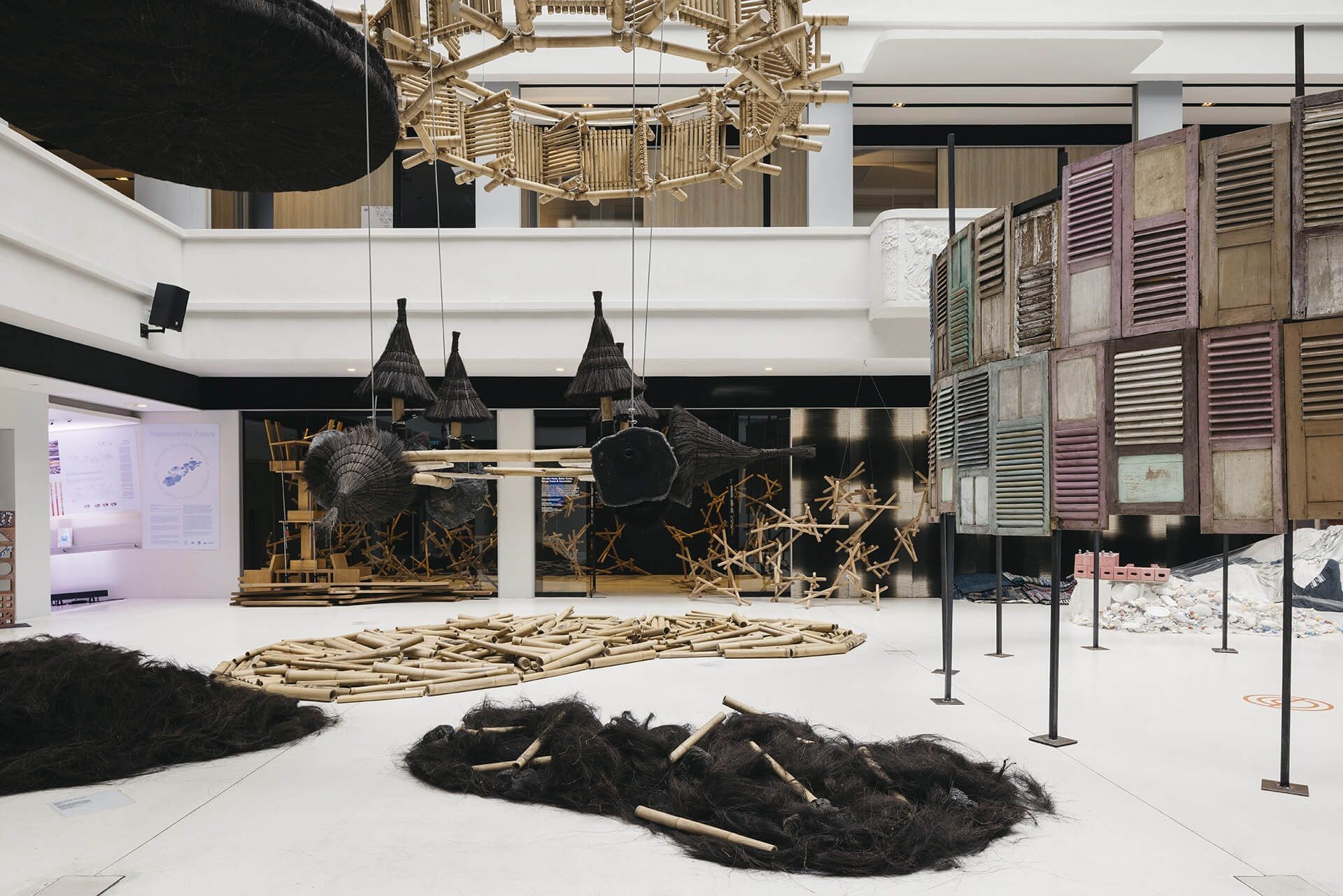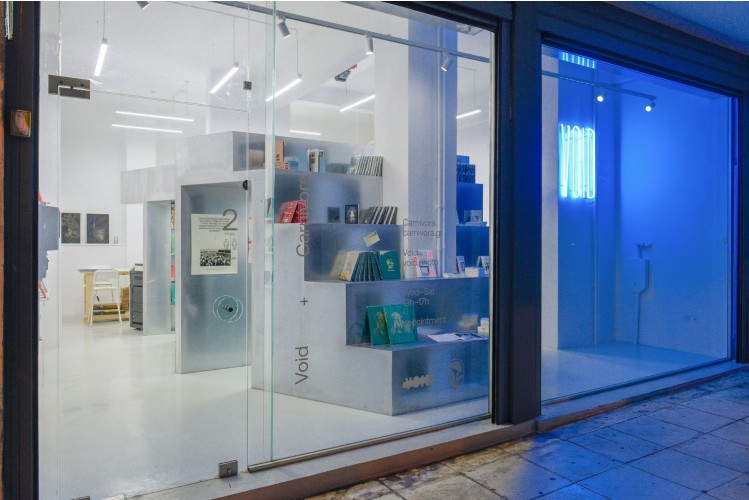“N * thing is Possible”: Οικολογικός τουρισμός μέσω του σχεδιασμού
DS.WRITER:
Σοφία Θρουβάλα
© Studio Periphery, Courtesy of Potato Head and OMA | Πηγή Εικόνας: stirworld.com
Με αφορμή την Εβδομάδα design της Σιγκαπούρης, άνοιξε για το κοινό μια ιδιαίτερη έκθεση η οποία φιλοξενείται στο Εθνικό κέντρο Design. Η έκθεση “N * thing is Possible” εγκαινιάστηκε στα μέσα Σεπτεμβρίου και θα διαρκέσει ως το τέλος του έτους (25/12). Γιατί είναι ιδιαίτερη η έκθεση αυτή; Στην οργάνωση, στη δομή της και στον τρόπο έκθεσής της, η “N * thing is Possible” διαφέρει σημαντικά από άλλες προσπάθειες ανάδειξης του design ως λύσης στην κλιματική αλλαγή. Ο τίτλος αφορά το πώς μπορούμε να δημιουργήσουμε κάτι από το τίποτα, δηλαδή χωρίς επιπλέον σπατάλες υλικών και χωρίς περαιτέρω καύση ορυκτών για την παραγωγή νέων αντικειμένων. Τονίζει τη φιλοσοφία της “κυκλικής” παραγωγής-κατανάλωσης, που είναι οικολογική και περιβαλλοντολογικά συμφέρουσα, αν όχι σωτήρια.
Πιο συγκεκριμένα, η έκθεση οργανώνεται από την Potato Head, σε συνεργασία με την OMA, η οποία αναλαμβάνει και την επιμέλεια. Το ενδιαφέρον σε αυτή τη συνεργασία είναι το γεγονός πως η Potato Head δεν είναι μια συνηθισμένη εταιρεία φιλοξενίας. Αν και τα διαμερίσματα που διατηρεί ανά τον κόσμο είναι πολυτελέστατα και το κόστος υψηλό, προτείνει χώρους που οικειοποιούνται μια κουλτούρα “ανθεκτική”, με μηδενική χρήση πλαστικού, με απαγορευτική την κατανάλωση ζώων και ζωικών παραγώγων και μια αρχιτεκτονική που αναδεικνύει την τοπική κουλτούρα και την αειφορία. Επιπλέον, κάθε δομή τρέχει εκπαιδευτικά προγράμματα οικολογίας για παιδιά και δραστηριότητες για τους ενήλικες. Το βασικότερο όμως είναι πως το design επίπλων στα πλαίσια των κολοσσιαίων αυτών ξενοδοχειακών μονάδων, είναι όλο βιώσιμο και βασίζεται στην ανακύκλωση των υλικών. Τέλος, η Potato Head διατηρεί ένα brand ρούχων από χρησιμοποιημένα υλικά, υπό το σύνθημα «Good Times, Do Good».

© Kevin Mak, courtesy of OMA | Πηγή εικόνας: archdaily.com
Η φιλοσοφία της Potato Head, λοιπόν, αποτελεί και βασική αιτία προώθησης βιώσιμων πρακτικών στο design, και για αυτόν τον λόγο είναι κεντρικός παράγοντας της έκθεσης στη Σιγκαπούρη μαζί με την επίσης οικολογική αρχιτεκτονική φίρμα ΟΜΑ. Η τελευταία έδωσε σάρκα και οστά στη φιλοσοφία του ιδρυτή τής Potato Head, Ronald Akili, με τον σχεδιασμό και την υλοποίηση του Desa Potato Head στο Seminyak του Μπαλί, ενός αρχιτεκτονικού συμπλέγματος χωριού (!) που προάγει τη βιωσιμότητα ως το βασικό επιχειρηματικό ήθος του ομίλου.

© Kevin Mak, courtesy of OMA | Πηγή Εικόνας: archdaily.com
Στην έκθεση, παρουσιάζονται έργα διαφόρων σημαντικών σχεδιαστών και εικαστικών. Σε αυτούς συμπεριλαμβάνονται το εδραιωμένο Studio Toogood και ο σπουδαίος αρχιτέκτονας και καθηγητής Kengo Kuma, ενώ επίσης συμμετέχουν καλλιτέχνες και σχεδιαστές από τη Σιγκαπούρη, όπως το jakarta studio και η γνωστή BYO Living. Μάλιστα, η BYO Living διανύει μια μακρά πορεία συνεργασίας με το Potato Head, για το οποίο και σχεδιάζει τους εσωτερικούς χώρους και τα προϊόντα στα τουριστικά θέρετρα. Επιπλέον, στην έκθεση παίρνει μέρος η Eco Mantra, μια εταιρεία υποστήριξης βιώσιμων και αειφόρων πρωτοβουλιών στο design και την περιβαλλοντολογική μηχανική με έδρα το Μπαλί, αλλά και η τοπική εστίαση όπως η Tanuki Raw της Σιγκαπούρης. Το “εργαστήριο”-έκθεση διευθύνεται από την TRASHLAB, τη Miniwiz & The Idea Co και την Εθνική Υπηρεσία Περιβάλλοντος.
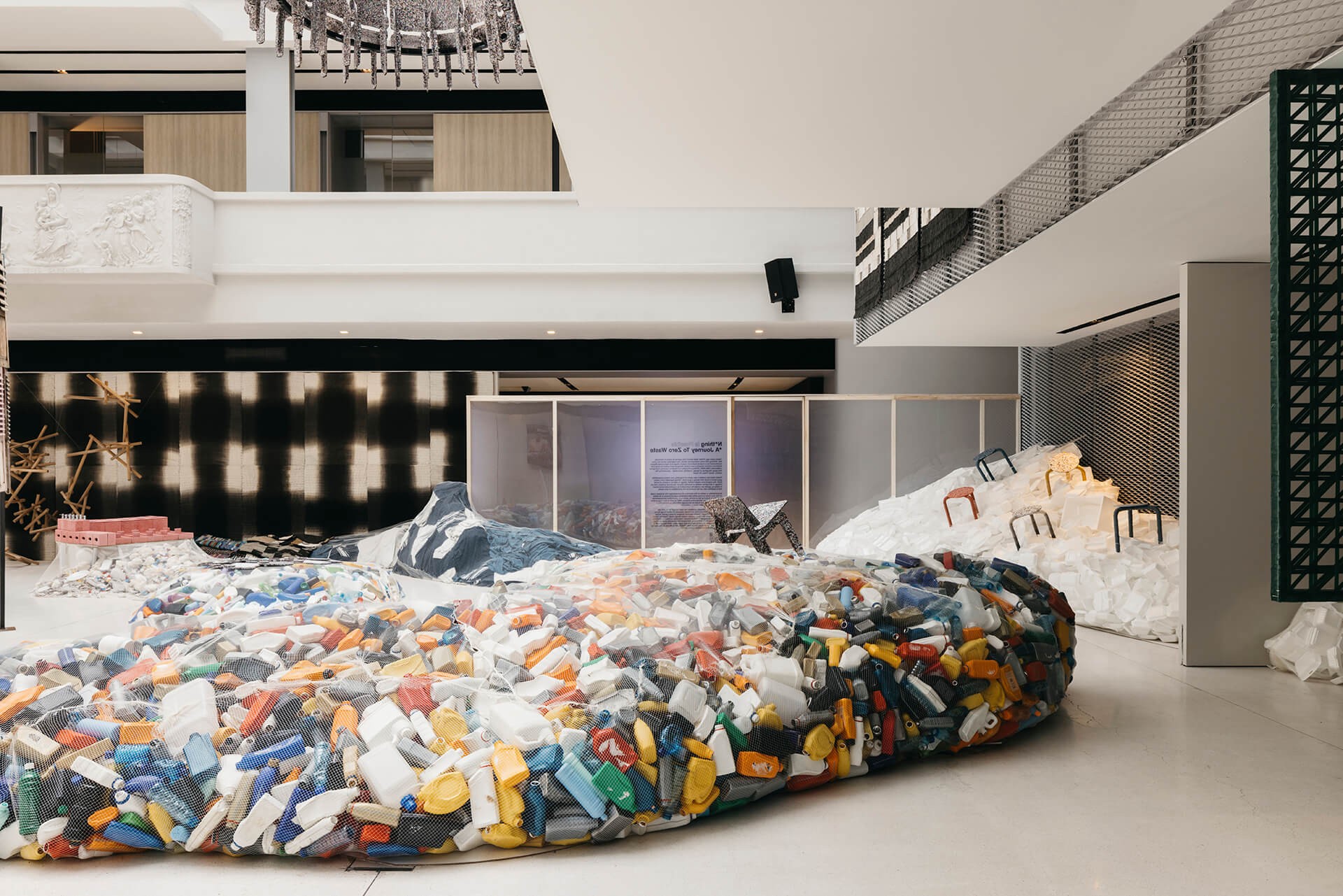
© Studio Periphery, Courtesy of Potato Head and OMA | Πηγή Εικόνας: stirworld.com
Ο τρόπος έκθεσης έχει πολύ ενδιαφέρον. Βλέπουμε την πορεία του σκουπιδιού με το έξυπνο τέχνασμα της αντικατεστημένης μουσειακής βάσης! Συγκεκριμένα, σακούλες γεμάτες με το πρωτογενές υλικό για τη δημιουργία των έργων, όπως πλαστικό, τοποθετούνται ως βάθρο για τα έργα design που εκτίθενται. Αυτό δημιουργεί την άμεση σύνδεση πως το απόρριμμα, στα πλαίσια της φιλοσοφίας της επανάχρησης, μπορεί να αποτελέσει τη βασική πηγή υλικών για τη δημιουργία έργων φιλικότερων προς το περιβάλλον, που παράλληλα εφιστούν την προσοχή για τον περιορισμό της χρήσης του πλαστικού και των ορυκτών καυσίμων.
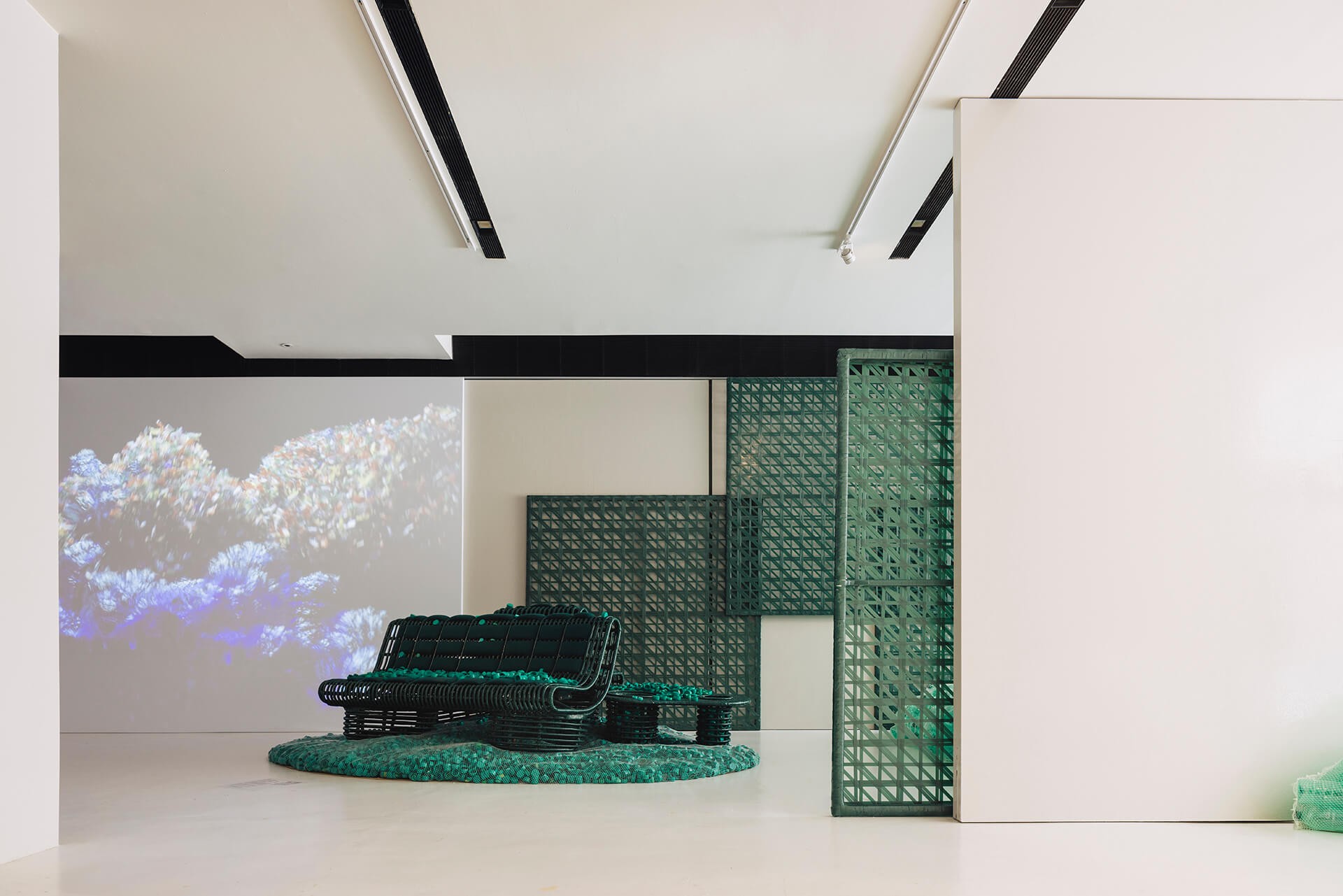
© Studio Periphery, Courtesy of Potato Head and OMA | Πηγή Εικόνας: stirworld.com
Και τα ίδια όμως τα έργα παρουσιάζουν ιδιαίτερα χαρακτηριστικά, όπως το ανοιχτό Κολοσσαίο του Andra Matin, ο οποίος δημιουργεί ένα γλυπτό-αρχιτεκτόνημα σημαντικών διαστάσεων, κατασκευασμένο από 6.600 παραδοσιακά παραθυρόφυλλα. Σημαντική είναι η αναφορά και στις εμβληματικές καρέκλες της BYO Living, οι οποίες είναι κατασκευασμένες εξ ολοκλήρου από την επανάχρηση πλαστικών καπακιών. Ο Andreu Carulla δημιουργεί, αντίστοιχα, ένα σκαμπό με πόδια από λιωμένη πολυστερίνη, το κάθισμα του οποίου είναι από ανακυκλωμένα μπουκάλια σαμπουάν.
Τέλος, κεντρικό μέρος της έκθεσης αποτελούν οι εγκαταστάσεις του Kengo Kuma, με τη χρήση φυσικών υλικών και ανακυκλωμένων πολυμερών.
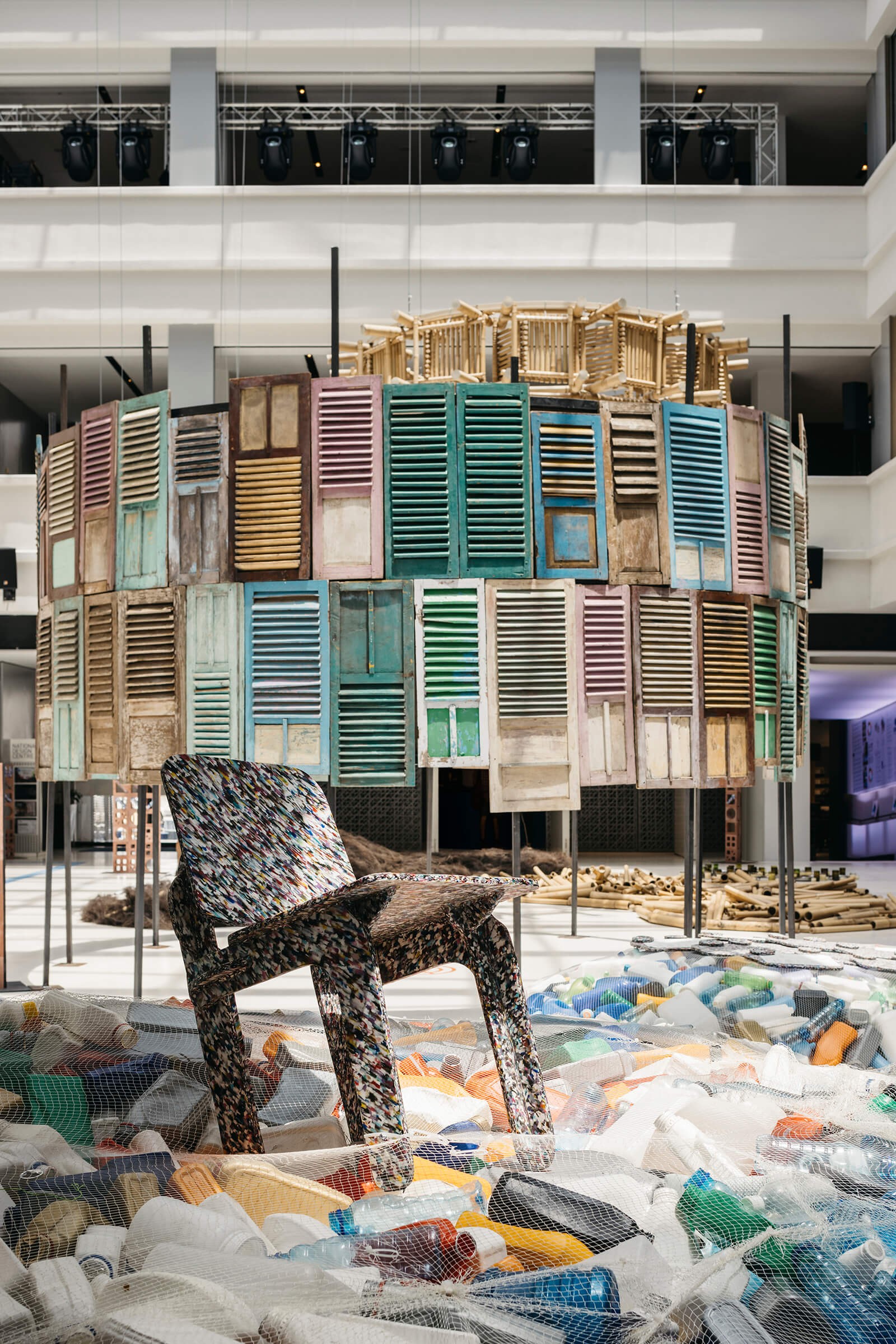
© Studio Periphery, Courtesy of Potato Head and OMA | Πηγή Εικόνας: stirworld.com
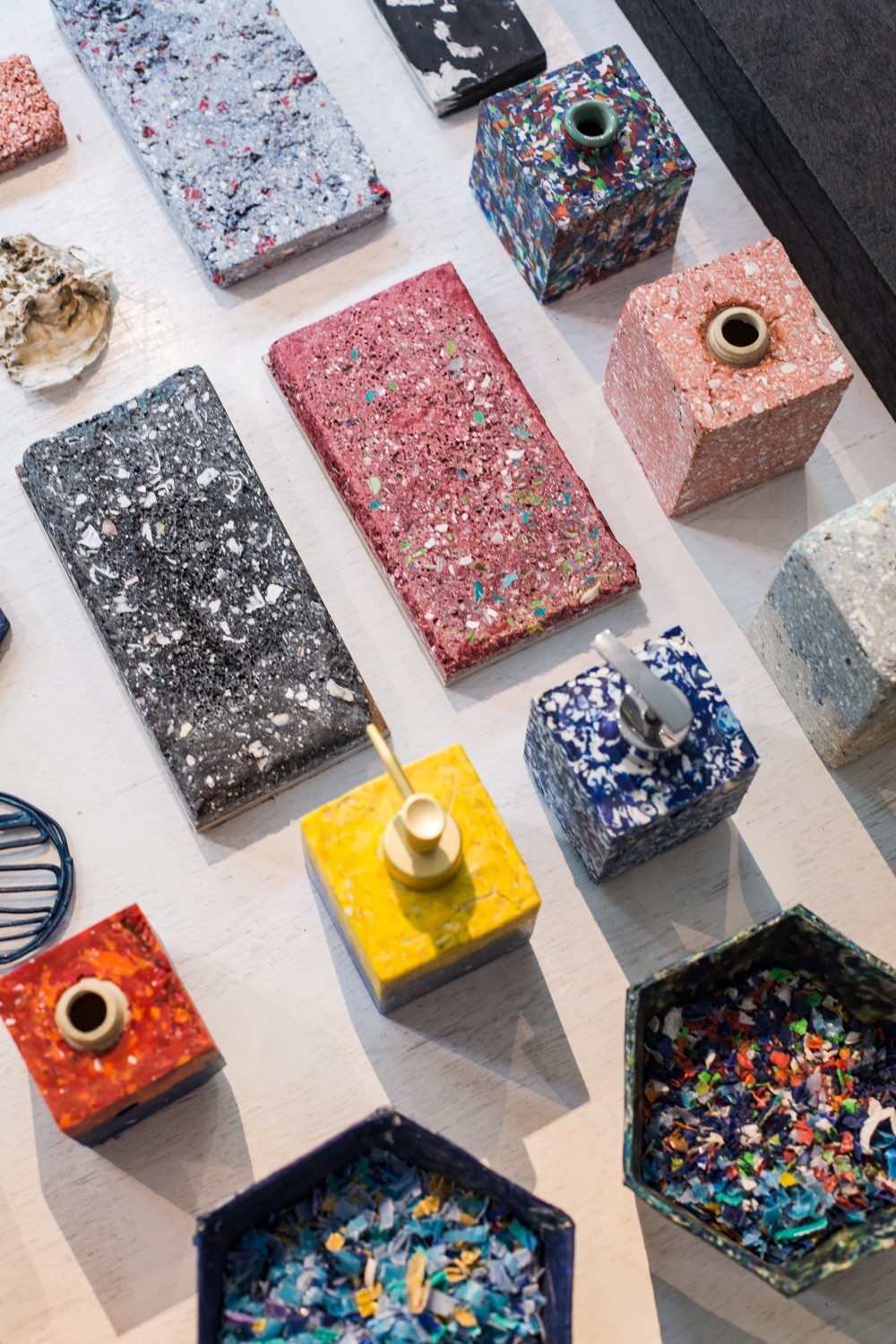
Πηγή Εικόνας: designsingapore.org
Στα πλαίσια της έκθεσης, η OMA σχεδίασε σειρά “διδακτικών πινακίδων” με στόχο την παρουσίαση του προβλήματος των ροών αποβλήτων, συμπεριλαμβανομένων εκείνων που παράγουν οι τουριστικές βιομηχανίες, προτείνοντας εναλλακτικές εφαρμόσιμες λύσεις. Η έκθεση, για την παρουσίαση των έργων ώστε να προκύπτει η οπτική κατανόηση του προβλήματος και μια πρόσκληση για ευαισθητοποίηση, χρησιμοποίησε έναν μεγάλο όγκο πλαστικού ο οποίος στο τέλος του show θα ανακυκλωθεί, με την TRASHLAB να υπόσχεται πως θα αποτελέσει πρώτη ύλη για τις δημιουργικές βιομηχανίες και τα εργαστήρια design της Σιγκαπούρης, προωθώντας τόσο τη φιλοσοφία της έκθεσης όσο και την ανάγκη δημιουργικής έκφρασης σε έναν κόσμο που καταρρέει.
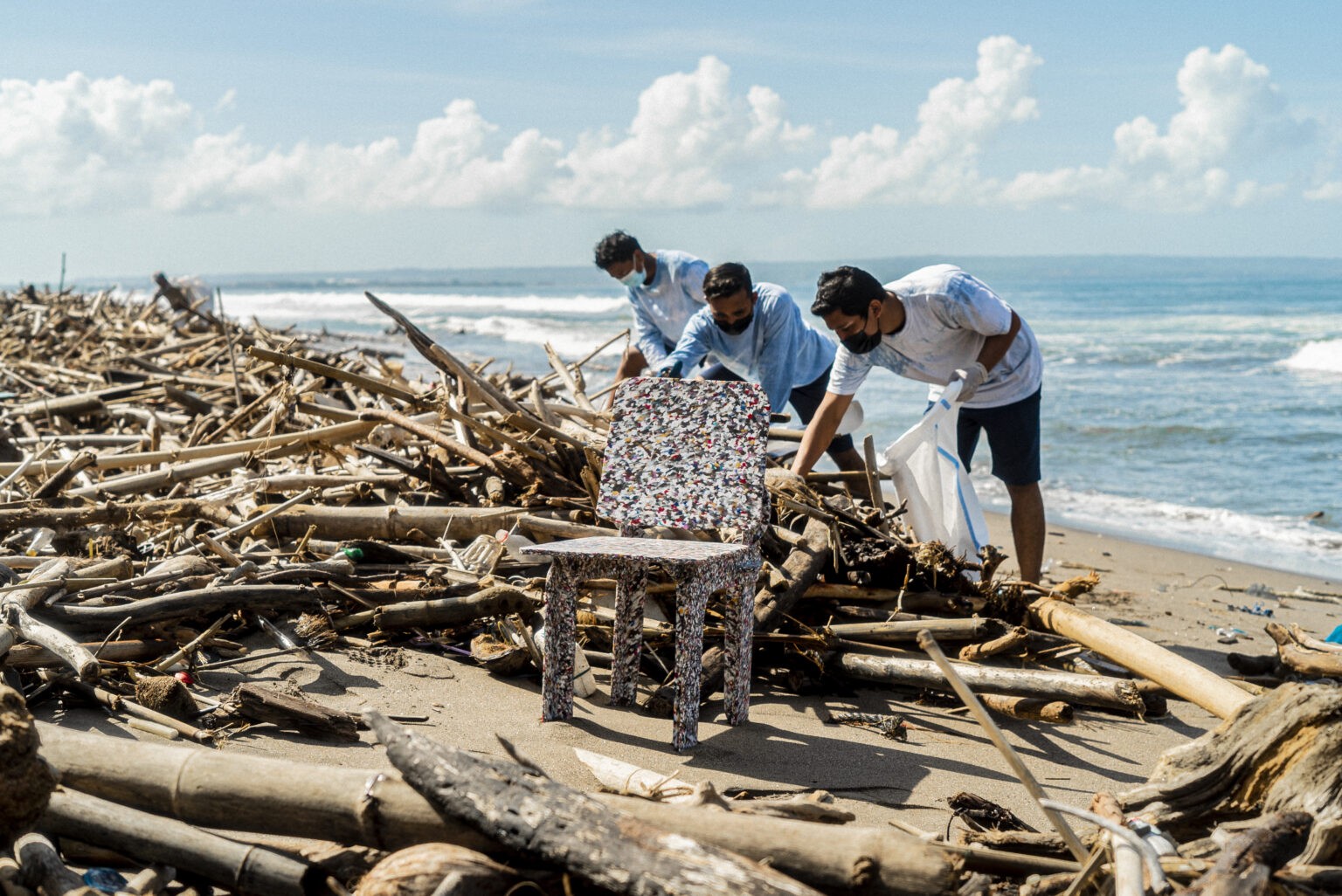
Πηγή Εικόνας: designsingapore.org





